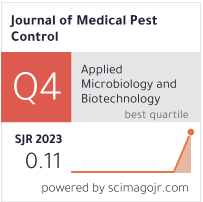Research proeress on Brucella typing
Abstract
Abstract
This review summarizes recent advances in Brucella typing methods, which are crucial for epidemiological surveillance, outbreak investigation, and disease control. Traditional phenotypic techniques such as biotyping have gradually been complemented and, in some cases, replaced by molecular typing methods, including multilocus sequence typing (MLST), multiple-locus variable-number tandem-repeat analysis (MLVA), and whole-genome sequencing (WGS). These molecular approaches offer higher resolution, accuracy, and speed in differentiating Brucella species and strains. The review discusses the advantages, limitations, and applications of various typing techniques in clinical and veterinary settings. Current challenges and future directions for improving Brucella typing, such as integration of bioinformatics tools and standardization of protocols, are also highlighted. This progress facilitates better understanding of Brucella epidemiology and supports enhanced control strategies.
Full text:
PDFReferences
Yang Q., Shao Z., Yang X., Yu B., Zhang Q., Zhao S., Yang F.



